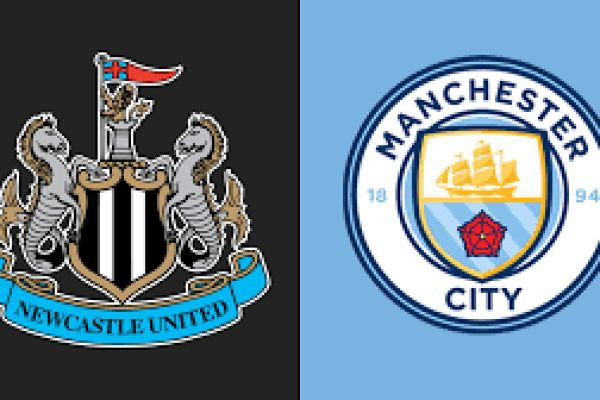The fixture between Newcastle United and Manchester City has evolved from a predictable City dominance into a genuine tactical tussle. It pits City's unparalleled possession control and systemic attacks against Newcastle's high-intensity vertical transition and disciplined pressing structure.
Manchester City: The Possessional Dominance
Manchester City, under Pep Guardiola, adheres to a well-known yet almost impossible-to-stop system, typically lining up in a nominal 4-3-3 that transforms dynamically in possession.
Strategic Goal: Midfield Overload and Asymmetrical Attack
City's objective is to control the game through relentless possession, forcing Newcastle into continuous defensive work and exploiting the small pockets of space that eventually appear.
The Box Midfield (3-2 Build-up): The core mechanism is the fluid backline. Often, one full-back (the 'inverted' full-back, frequently on the left or right) tucks into the midfield to create a 3-2 structure in central areas. This ensures central overload, allowing City to easily recycle the ball and bypass Newcastle's first line of pressure.
Asymmetrical Wingers: City uses one winger to hold the width (often on the left) while the opposite winger tucks tightly inside (often on the right), acting as an auxiliary striker or No. 10. This creates dilemmas for Newcastle’s full-backs and central midfielders regarding who should mark whom.
Exploiting the Half-Spaces: The true danger lies in the half-spaces—the channels between Newcastle’s center-backs and full-backs. The attacking central midfielders and the inverted winger constantly run into these zones, seeking the precise cut-back or through-ball delivered by the deep-lying playmaker.
Key Player Role: The Center-Forward
While City relies on collective movement, the central striker (e.g., Haaland) is essential. Their role isn't just to score but to pin the central defenders and pull them out of position, creating space for the wide attackers and midfielders to run into.
Newcastle United: Intensity, Structure, and Verticality
Newcastle, managed by Eddie Howe, focuses on a high-energy game, characterized by defensive solidity and lightning-fast transitions. They generally deploy a 4-3-3 or a 4-5-1 defensive shape.
Strategic Goal: Frustration and Explosive Counter
Newcastle aims to frustrate City by maintaining excellent compactness and then using the speed of their wide players and the energy of their midfield to launch devastating counter-attacks.
The Mid-Block: Newcastle will not chase City's center-backs high up the pitch consistently. Instead, they will form a tight mid-block, often inviting City's center-backs to step forward, before the midfielders initiate the press. The priority is denying central access to City’s playmakers.
The Double Pivot Press: The central midfield trio is tasked with intensity. They must screen the central defenders and aggressively close down City's 'box midfield' to prevent them from settling. This phase demands immense fitness and tactical discipline.
The Direct Counter: Upon winning the ball, Newcastle seeks to play forward immediately. The pacey wide forwards are the primary outlets, running onto long, diagonal passes that bypass City's high defensive line. The goal is to get a shot off within three to five passes before City can reorganize their counter-press.
Key Battle: Full-Back Resilience
Newcastle’s full-backs face the most difficult defensive assignment, tasked with dealing with both City's wide winger and the overlapping central midfielder or full-back. Their ability to manage these 2v1 situations without compromising the central defense is vital.
Decisive Tactical Duels
The result of the match will pivot on the success of these three head-to-head tactical conflicts:
1. Midfield Pressure vs. Retention (The 3-2 vs. The Mid-Block)
If City Wins: City’s central midfielders (Rodri, De Bruyne, Foden) successfully bypass the Newcastle press, allowing them to patiently switch the play and find the narrow runners in the half-spaces.
If Newcastle Wins: Newcastle's central trio forces turnovers deep in City's half, immediately feeding the ball to their forwards who can run at a exposed central defense.
2. The Width War: Full-Backs and Wingers
The most unpredictable element is how City's inverted full-back (e.g., Stones/Akanji) affects the geometry. If Newcastle's wingers drop too deep to mark them, it creates space for City's wide players. Newcastle must find the balance between defending the flanks and keeping their forwards high enough to be effective outlets.
3. The Transition Moment
The difference in quality often shows up in the moments after the ball is turned over. Newcastle needs clinical finishing and quick decision-making on the break. City, however, is masters of the counter-press, often winning the ball back immediately to restart their possession cycle. The match is a constant cycle of Newcastle winning, giving the ball back, and winning it again. The moment they don't give it back is their chance to score.
This match will be defined by City's precision in tight spaces and Newcastle's sheer intensity and ability to explode into open space when the opportunity arises.








